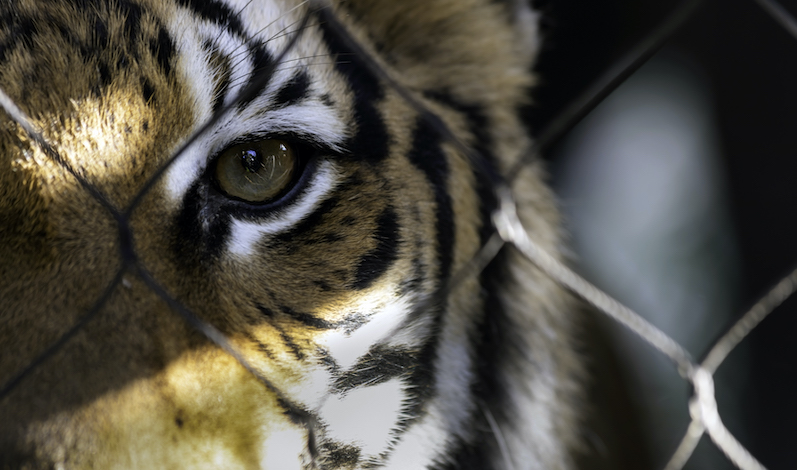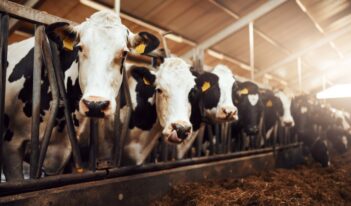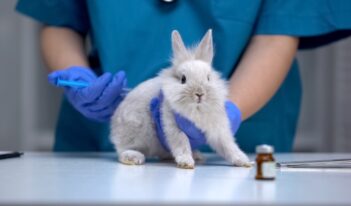
Scholar argues for the strengthening of USDA regulations in big-cat ownership and exploitation.
The release of the second season of Netflix’s hit show Tiger King has placed its self-proclaimed king, Joe Exotic, back into the public spotlight.
But how did Tiger Kings come to be?
It all comes down to regulatory gaps and loopholes, according to Cassady Cohick, a law student at American University’s Washington College of Law.
The regulation and protection of tigers falls under the scope of the U.S. Fish and Wildlife Service (FWS), a subagency of the U.S. Department of Agriculture (USDA). As Cohick explains in a recent comment, the FWS offers tigers additional regulatory protection under the Endangered Species Act (ESA). Although states oversee the regulation of intrastate private ownership of exotic big cats as pets, which includes tigers, lions, jaguars, leopards, cougars and cheetahs, animals owned commercially for exhibition, sale, and transportation are regulated by USDA, Cohick explains.
The Animal Welfare Act (AWA) protects the breeding, exhibition, and sale of animals. Under the authority of this law, the Animal and Plant Health Inspection Service (APHIS), a subagency within the USDA, serves to safeguard the care and health of plants and animals in the United States. Owners who want to transfer or sell big cats across state lines must seek both a permit from Department of Interior and a license from the USDA, Cohick explains.
The license is a standard, widely accessible form that obliges big-cat owners to seek veterinary care, maintain a record during the sale or purchase of tigers, and transport the animals humanely by providing adequate food, water, shelter, and care according to AWA standards. The license also subjects the big-cat owner to facility inspections, which can result in citations, a license suspension, or even revocation, Cohick notes.
Cohick argues that USDA should act to discourage big-cat owners from abusing and exploiting regulatory loopholes, such as those related to licensing and welfare inspections. Cohick notes that loopholes have been closed before, including a recent FWS rule that closed a loophole allowing big-cat enthusiasts to profit from the constant breeding, exhibiting, and selling of certain “generic” tigers while denying the tigers legal protection.
In 2016, FWS issued a rule that would require all tiger owners to obtain a permit through the Interior Department or register under a federal captive-bred wildlife registration program to engage in interstate commerce, Cohick explains. Before 2016, the permit requirement from the Interior Department only applied to purebred tigers of a known lineage. Cohick explains that, by breeding non-purebred tigers, private owners could avoid registering their tigers and adhering to the AWA’s welfare standards. She argues that, similar to FWS and the Interior Department, USDA could close a regulatory gap in its licensing and inspection rules.
Cohick outlines two current loopholes—the loose licensing and revocation standards, and the lack of inspection guidance and citation thresholds—that could be closed with her proposed framework.
Licensing is not specific to big cats, and the USDA risks dispensing sham licenses that can be used to evade AWA standards of care, Cohick explains. The AWA license requirements to breed, sell, transport, or purchase an “animal” can apply to anything from “a tiger to a hamster,” she argues. Because licenses are not species-specific, big-cat breeders can claim a USDA license for any animal within the AWA’s definition of an animal, such as a hamster, while evading the care and record-keeping standards of tigers. Likewise, those owners who have had their licenses revoked by USDA for documented cases of animal cruelty can also easily bypass licensing requirements by appointing others without such records to obtain licenses, Cohick explains.
Under the AWA, USDA must conduct regular animal welfare inspections, but USDA regulations do not provide a uniform standard of care, Cohick explains. USDA’s Animal Welfare Inspection Guide, does not address the specific needs of big cats and therefore prevents inspectors from adequately identifying and reporting abuse, Cohick argues. She asserts that USDA must provide species specific, clear, and expansive guidelines to protect big cats.
The USDA guide also offers no floor or ceiling on the number of citations needed to revoke or suspend a USDA license, Cohick explains. She notes that a high number of citations does not seem to correlate with revocations. USDA has failed to revoke the licenses of some individuals with 50 or more abuse and standard of care citations, even after the People for the Ethical Treatment of Animals, commonly known as PETA, brought two large-scale citizen suits.
Moreover, a roadside zoo and an animal sanctuary should have the same minimum standard of care, Cohick asserts. She also proposes that the APHIS set limits on the number of citations that owners receive before triggering a license revocation. Cohick calls for certain AWA violations, such as grossly negligent care, inhumane living conditions, and operating under the guise of another’s license, as grounds for automatic license revocation.
By strengthening its regulatory oversight, USDA can discourage so-called Tiger Kings from abusing current regulatory gaps, concludes Cohick.



